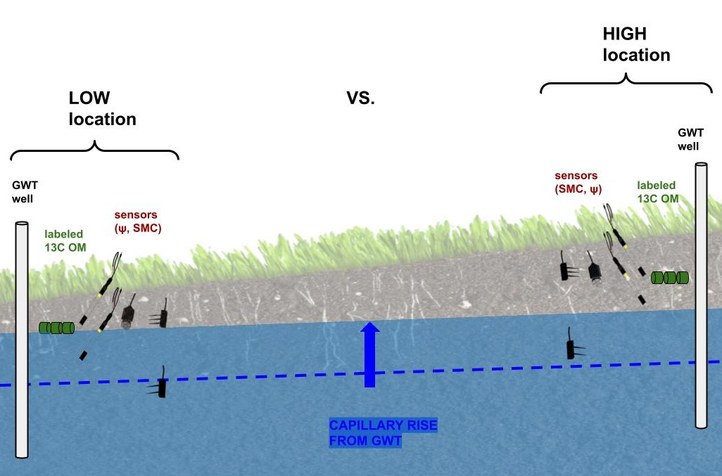Agricultural drought: Will capillary rise from groundwater be among pertinent drivers of heterotrophic activity and carbon cycling in our soils?
Large parts of the world have been subjected to altering weather conditions as a result of climate change. The most observable (and problematic) outcomes for Europe are prolonged periods of extreme heat and associated droughts with potential adverse impact on crop production. Next to crop drought stress also soil microbial activity can be inhibited by such dry (soil) conditions. But aside from precipitation, soil moisture can be supplied by groundwater via the action of capillary rise. Considering this, the question arises if (and to what extent) this capillary rise contributes to a minimal soil moisture content required for soil microbial activity.
In the frame of FWO-project G066020N we study soil moisture and microbial activity in function of soil texture and groundwater depth. Sloping croplands are used since they give rise to varying groundwater table depths, allowing to compare different moisture input to topsoil via capillary rise. In a first experiment (WP1) we study decomposition of incorporated of 13C-labelled exogenous organic matter (OM). In a second experiment (WP2) native soil OM mineralization will be monitored by 13C/12C-resloved CO2 emission measurements. By monitoring groundwater depth, soil moisture tension at various depths and volumetric moisture content occurrence of drought and potential water supply by capillary rise is being monitored alongside at 24 microplots across 12 farmers’ fields in the province of East Flanders.
In a later stage of the research, different biochemical models will be evaluated for their ability to simulate OM mineralization under conditions of drought (WP3). It will be examined if the complexity of introducing capillary rise in such biochemical models is valuable for simulations of soil carbon dynamics. The model with the highest performance will then be used to make careful predictions about Flanders in increasingly drier conditions (i.e. lowering groundwater tables) (WP4).
